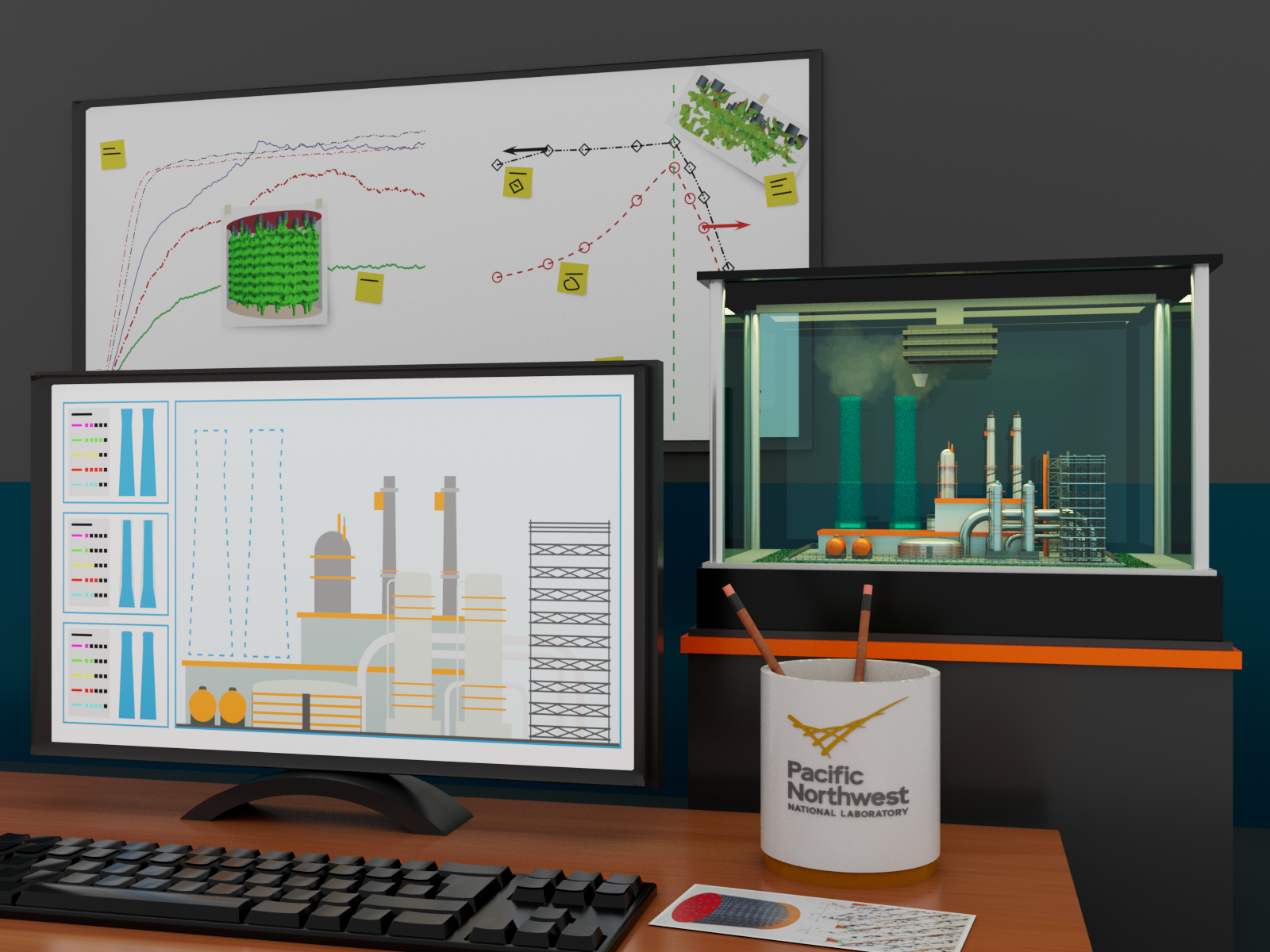Tools to Test and Optimize Carbon Capture Systems
Models allow scientists to efficiently tune customizable carbon capture systems

Simulations of the physics in carbon capture columns can help researchers predict how full-size systems will behave.
(Illustration by Cortland Johnson | Pacific Northwest National Laboratory)
Reducing carbon dioxide (CO2) emissions is critical to mitigating the effects of climate change. For industrial processes that produce substantial quantities of CO2, developing technologies that efficiently capture the emitted CO2 can play an important role in minimizing their environmental impact.
But individual emitters are different, with a range of sizes, emission rates, and other important properties. Being able to quickly optimize systems tuned to individual needs will enable the rapid deployment of commercial-scale carbon capture technologies. As part of the multi-institution Carbon Capture Simulation for Industry Impact (CCSI2) project, researchers at Pacific Northwest National Laboratory (PNNL) are developing a toolset to help industry predict the absorption-based carbon capture of exhaust gases generated from the combustion of fossil fuels.
The PNNL team has worked to create a computational toolset that predictively models carbon capture columns. These columns can be custom manufactured with higher surface areas via 3D printing but require optimization for each different application. A new paper led by PNNL mechanical engineer Rajesh Singh applies the modeling tool to investigate the performance of opposite gas and liquid flows in new columns.
“We want to help industrial partners more efficiently deploy packed columns for carbon capture,” said Singh. “By accurately modeling how changing various column parameters affects the overall performance of a system, we can accelerate optimization. This is particularly important for columns with so many different factors to tune and intensify the chemical processes.”
Their simulations target advancing the understanding of the fundamental physics of how liquids and gases interact in the column. Modeling the underlying properties of different carbon capture solvents and the new column design allows the team to predict how the full-scale system will behave. The predictive nature of the simulations can help industrial users minimize the “hit and miss” phase of customizing a CO2 capture column.
The CCSI2 team studied both traditional and next-generation carbon capture solvents, including non-aqueous solvents developed at PNNL. The outcomes of the study provide insight into the operating range where the columns can be most effective. For example, the simulations can predict the point at which the gas inside the column prevents more liquid from entering, known as the flooding regime. At this point, the column stops working properly and is no longer capturing CO2.
By predictively modeling these important properties for different column configurations, this work can help identify optimized columns faster and at a lower cost.
“This type of tool is essential for deploying carbon capture fast enough to make an impact,” said PNNL mechanical engineer Zhijie Xu, co-author of the paper.
In addition to Singh and Xu, the PNNL team includes Yucheng Fu, Chao Zeng, Charlie Freeman, and Jie Bao. The team included collaborators Du Thai Nguyen and Pratanu Roy of Lawrence Livermore National Laboratory and Grigorios Panagakos of Carnegie Mellon University.
This work was funded by the Department of Energy’s Office of Fossil Energy and Carbon Management through the CCSI2 project, which is led by the National Energy Technology Laboratory in partnership with PNNL, Lawrence Livermore National Laboratory, Lawrence Berkeley National Laboratory, Los Alamos National Laboratory, Oak Ridge National Laboratory, West Virginia University, Carnegie Mellon University, University of Pittsburgh, University of Notre Dame, University of Toledo, and the University of Texas at Austin.
Published: March 10, 2023